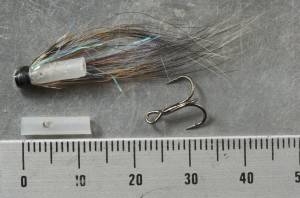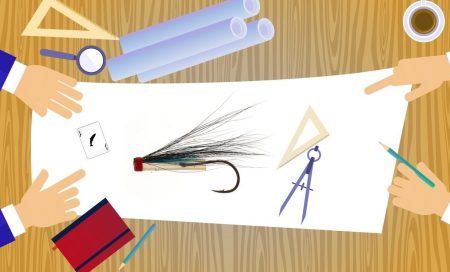

It’s not just about making a hole in a plastic tube
I am often asked; how to allocate the hole on a riffling hitch tube fly? Must the hole in the tube be equal to 90° or at an angle? – Do I need to block the hole in the front end of the fly?
These questions cannot be answered unequivocally – It all depends on how your hitch fly is made, which type of tubing it is tied on, how long the fly is — and probably other factors.
Tying a functional riffling hitch fly is like building a miniature toy aeroplane or boat – If you’ve made one that works perfectly … then small changes may ruin the design.
Join us while we discuss our ideas and thoughts on the fantastic riffling hitch tube fly.
Engineers that build boats and airplanes rely on great computing power to make calculations on the many complexities that occur when an object is immersed in water or move through the air – maybe we could make a computer model that could show us the way to the perfect riffling hitch fly
Tying flies – It’s about details, and the fish is the final judge of your project
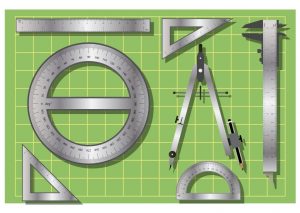
The trained angler will pull his or her fly through the water and observe if it swims straight and looks lively… but not all details are visible to the human eye, and the fish will be the final judge of your fly-tying project.
Some flies prove to work great, and some may even end up being the most precious flies you have in the box; favourite flies you only bring out when the fish is reluctant to bite. I have some of those flies in my box, and honestly, I can’t put my finger on what makes those flies that special.

It would be great to make those special fish-catching flies every time we sit down to tie flies. Throughout my career as a fly fisher, I have tried to single out some of the unique features that make those specific flies great – I do that by replicating these flies repeatedly. One would think that this could be the perfect formula to obtain a consistent result – but I have learned that this isn’t always the case, and over the years, I have become more humble about this whole project of making the – perfect fly.
A combination of components could bring the fish to the fly
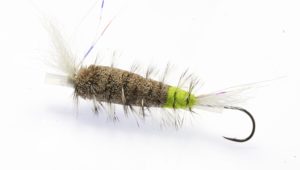
Right: The Bomber dry fly with its odd design is an excellent illustration of how a combination of components in a fly design may form the perfect fly
A cat and mouse game – based on details
We tend to think that animals see things as we see them but the truth is that we know all too little about how animals perceive the world.
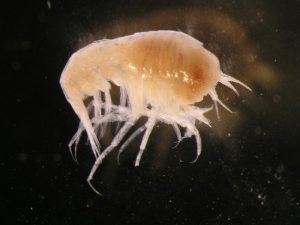
Gamefish and prey have been perfecting this hide and seek game for 100 million years and we may only assume that they are experts at what they do
Gamefish and prey have been perfecting this hide-and-seek game for 100 million years, and we may only assume that they are experts at what they do to such a degree that there is only a thin line between – hiding and being detected… We may also assume that micro details reveal the prey to the predator. It could be a small reflection in the skin of the prey, the way the light shines through the prey’s body, small movements of the prey, or it could merely be the movement pattern of the prey when it is exposed to the currents in the sea and river.

Atlantic salmon that was deceived by the looks and moves of a tiny riffling hitch V-FLY
A modern riffling hitch tube is related to side planers, outboard riggers and the ottering of boats.
Riffling hitch tube flies are a relatively new design in fly tying – To my knowledge, it was the English salmon guide and author Mr Crawford Little who, in his book: Success with Salmon from 1988, was one of the first people to publish an example of the particular tube that would pull to the surface – A tube that would have the leader inserted through the side or belly of the tube as opposed to the conventional way where the leader was inserted through the front of the tube.
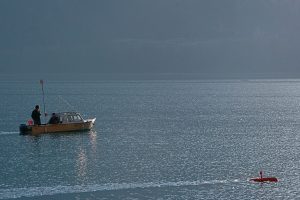
We tried to make a computer program that could make all the right calculations

Left Mr Fred Pucill. Fred has worked with the architectural design and construction of ships, boats, and other marine vessels at Force Technology
Using the planerboards as an example we had hoped that the naval architect had a smart solution for a computer program that could calculate the perfect design of the riffling hitch tube fly – but we quickly came to understand that predicting the dynamics of a body moving and immersed in a medium, such as water or air, is extremely complex.
A century of model construction
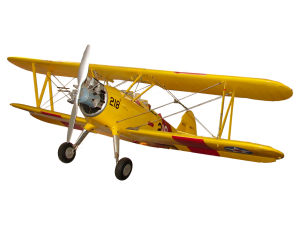
Computational fluid dynamics (CFD) and, in any case, the necessary computing power did not exist in those far-off days. Therefore, all the essential know-how had to be obtained from model testing. Initially, this was kept simple with 2D modelling. Still, as time went on and to gain much-needed information, complications were introduced, such as the effect of model roughness, a finite aspect ratio, flow speed for a given model size (Reynolds Number) and the formation and shedding of vortices from flow separation and lift. In this way, many very successful designs were obtained.
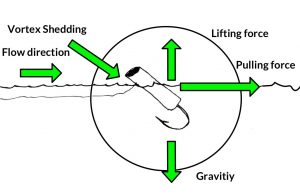
Fast forward to the present day, and we can now solve many problems for the motion of a body in a fluid – but not all. This brings us to some very special requirements for the dynamics of a riffling hitch lure which traditional CFD would have great difficulties solving confidently and which may even be impossible.
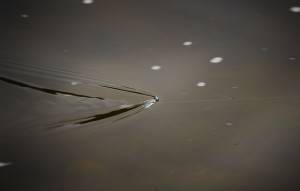
Secondly, the lure starts fully submerged – it’s not buoyant – but must “rise” rapidly to the surface in a controlled and known manner and then immediately take up its “operating” mode in the free surface, all in a matter of seconds.
Any unwanted lure motion during this critical period, and the salmon will be uninterested. And who wants that!
Vortex shedding – Something very special – Curious? see this remarkable video
Back to trial and error
These complex requirements can, therefore, only satisfactorily be solved by trial and error experimentation, so we will leave the computer model and calculation for now and revert to the way we have been doing our riffling hitch flies over the last 25 years, much the same way as those early aerodynamicists. It was necessarily a long time as there were many variables to consider. We are confident that our present designs behave precisely as we would wish. Of the many important variables, we have found that the most important are
- The tube’s length and inner and outer diameters form the lure’s ‘body.’
- The longitudinal position and diameter of the hole the leader leads to are also highly critical.
- We use hair from squirrel tails. This material has proven to be perfect for the job. To make things even more intricate, we prefer hair from young squirrels. This hair is not too stiff nor too soft Read more about the hair material we prefer to use
This is how we aim for the best possible riffling hitch tube flies.
See how we make our fantastic riffling hitch Silver tippet V-FLY
See a step by step instruction on how to make the best possible hitch tube fly

